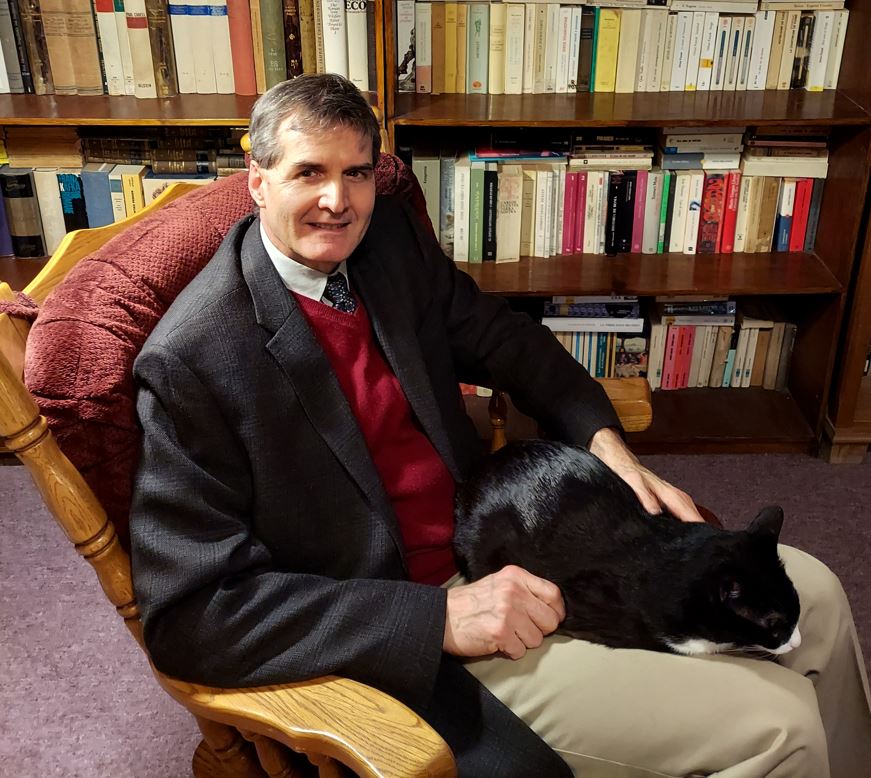
Dear Professor Arguelles,
Thank you again for your gracious responses to my questions in the past and for the answers that you’ve now made public on your recently published website! (Congratulations, by the way; I’m sure you’re glad to finally have it public!)
Rather than a traditional question of advice about a particular issue in language learning, I wanted to see if I’ve understood you correctly on the whole with respect to the different phases of language learning and the general materials and procedures that are more appropriate at one stage or the other.
As such, I’ve put together a (mostly simple) Word document summarizing (or synthesizing) what I perceive to be the stages of autodidactic language learning that have reared their heads across several of your videos and wanted to offer it to you for feedback and in case a similar “roadmap” might be helpful for learners in the future.
I’m quite confident that a great many autodidactic learners know of a number of good resources for their language-learning endeavors, but may not be so sure as to where they fit into the bigger picture of their language-learning journey and how to know when they are getting ahead of themselves and setting themselves up for frustration, simply because they may be inadvertently skipping over key stages of the learning process.
Perhaps you have been working on something similar as a “template” of sorts that learners can use to select their introductory materials and to know what they need to do next to get from introductory knowledge to intermediate and finally advanced proficiency for extensive reading.
I hope the attachment reflects your thinking reasonably accurately, and I’d greatly appreciate any corrections you have to offer. Thank you for your time!
With best regards,
Stephen Harris
Recommendation: Read through this roadmap, and make note of the different materials that would be appropriate for the language you are learning at one stage or another.
PHASE 1: Shadowing Your First Introductory Manual Beginning with 15-minutes a day, then working up to the full 30-minutes a day version. Note that the Scriptorium technique will be more beneficial at later stages (e.g., intermediate and beyond), but that the technique can be valuable at earlier stages when learning a language with a different script. Observe that in the “15-minutes a day” plan, the Scriptorium technique only comes into the picture after you have completed the Shadowing process for an entire introductory manual to help you further internalize it, whereas in the full 30-minutes a day version of Shadowing, the Scriptorium technique plays a role in the daily process from the beginning. |
PHASE 2: Further Textbook Work Phase 2 (Part 1): Other Generations of Similar, Introductory-Level Textbooks (Assimil/Linguaphone/etc) NUMBER OF MANUALS: There is no fixed number of manuals that this needs to be (it could be as few as 3 or as many as 6), but they should be worked through sequentially, and not simultaneously. Regarding a number of such manuals to use, there is no fixed and set answer. This depends upon both availability and the relatively difficulty of the language. Though it is helpful to go through the different generations of Assimil/Linguaphone/etc publishers, there is no point in doing this for its own sake. At a certain point you will find that you are ready to move on to more advanced materials, and there is no sense in holding back just to go through everything in your textbook collection. Edging towards a general rule, though, since both Assimil and Linguaphone work more intuitively, in addition to using several of these, I would also add some other textbook that approached the grammar in a much more explicit fashion. REVIEWING PREVIOUS MANUALS: You will find that you can go through each additional volume more rapidly than the one before, but during this phase you must do continuous review of what you have learned before, as this is the key to real internalization. Thus, while you are working on one volume, you should have the previous volumes on various review cycles or ellipses (picture a model of the universe, with the names of manuals in place of the planets). Phase 2 (Part 2): Textbooks using other approaches Grammar Translation (I.e., Something that approaches the grammar in a much more explicit fashion.) Audio lingual pattern drills (especially for highly inflected languages) Workbooks for verbal conjugation, etc. Phase 2 (Part 3): “Intermediate” and “Advanced” Textbooks in General Note different Shadowing procedure at this stage. See this in action with Russian, as an example. |
PHASE 3: Moving from Intermediate to Advanced Proficiency Reference Grammars Practical with exercises For learners in the target language Comprehensive 600-700 page reference grammars in your own native language This is especially great for classical/ancient languages Work through the sentences in these reference grammars using the Scriptorium technique. Primers and Readers Multiple copies Making interlinear texts from large photocopies until you don’t need the interlinear notes any longer. Bilingual Texts and Translations Read the translation FIRST, and THEN refer to the target language. Building up your understanding first at the level of the sentence, then the paragraph, then the page, then the chapter, then the section, and finally the whole book. Immediate deliberate delay Adding audio (as in Shadowing more generally) Listening + reading Reading + listening NOTE: For reading comprehension, flip the usual procedure by reading in the target language but listening to English. (That’s right.) This could also be the “Harry Potter stage” of learning. |
PHASE 4: Immersion Stay to Activate Language Skills (If Possible) |
PHASE 5: Moving from Intensive Reading to Extensive Reading Dictionary Work (Best when at the high intermediate to a beginning-advanced level.) As intensive reading initially Dictionary work is NOT productive when you have to look up too many words. Dictionary work is best when you can read a text and “get the gist” but still need to look up a few words to be certain you understand. The best way to get the most out of dictionary work is when you are an advanced reader already and don’t really need them to understand the text, but just for further illumination. In other words, dictionaries are best as: a pathfinder on the road illumination after arrival Specific Vocabulary Work (Only if absolutely necessary) Memorization from word lists, flash cards, Anki, etc. Working towards Truly Native Materials Multiple readings of “easy” texts as a halfway station between intensive and extensive reading. |
PHASE 6: Extensive Reading (The Goal) What are the materials on your wish list to finally read extensively now that you are ready for native materials? |
My reply:

Dear Mr. Harris,
Thank you so much for providing this roadmap to put in one place all the steps that I have discussed in various posts and places over the years. You have done an admirable job of quoting and paraphrasing what I have written in the past! I am sure that many people will find this to be one of the most valuable general purposes posts here in this new Q&A page, so thank you very much for this.
Rather than discussing small differences in the template you have provided, I have just gone ahead and made minor corrections. Beyond that, I would just point out that the bold print in your template should be read by others as emphasizing points that often need clarification and not as interpreted as saying that you must do it this way rather than that. I always recommend that people who want to know how I did it myself do it the way that I explain to them at first, but then, once they get it, to feel free to tweak it and adapt it to better suit them rather than feeling that they must do it “just so.”
This is probably most important to note in the block that you have labelled Phase 2, with its Parts 1, 2, and 3. People should please read these Parts as merely descriptive labels rather than as an immutably fixed sequence. That is, anyone who enjoys learning by this method will probably profit from doing Part 1 (other generations of Assimil / Linguaphone type textbooks), but in some cases these are few and far between, and in others people may prefer to get clarification from other types of manuals (pattern drills, grammar/translation, etc.) from Part 2 before they have gone through all of these.
Thank you once again for providing such an excellent summary Roadmap that we can make public for all to use!
With best regards,
Alexander Arguelles

